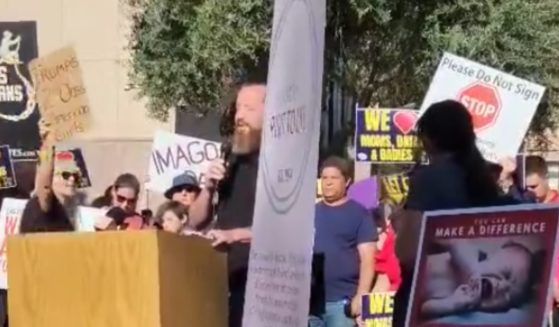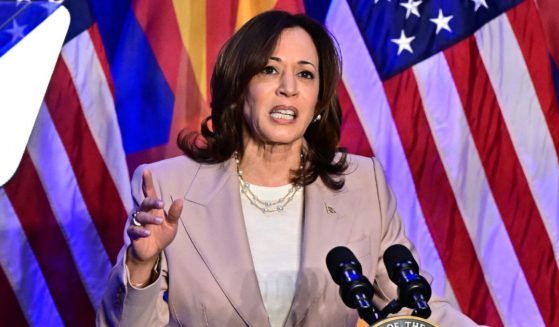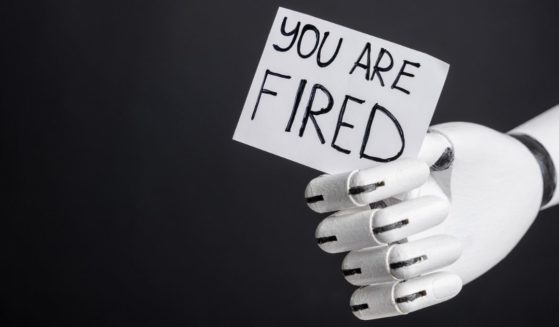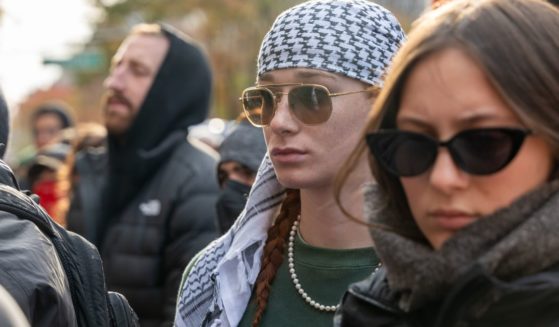The Irony of Protesters Pulling Down a Statue of Thomas Jefferson in the Name of Freedom
We knew it had to come to this eventually: Protesters have now toppled a statue of Thomas Jefferson, the nation’s third president and author of the Declaration of Independence.
You know, the founding document that reads, in part, “We hold these truths to be self-evident, that all men are created equal, that they are endowed by their Creator with certain unalienable Rights, that among these are Life, Liberty and the pursuit of Happiness.”
The Declaration of Independence has defined what it means to be an American for over two centuries, inspiring the likes of Abraham Lincoln, Frederick Douglass, Susan B. Anthony, the Rev. Martin Luther King Jr., Ronald Reagan and so many others, the world over.
The statue of Jefferson was toppled by protestors Sunday night in Portland, Oregon, at a high school named for the Founding Father.
“The words ‘slave owner’ and ‘George Floyd’ were written on the white marble base where the statue had stood,” according to KPTV-TV.
“Jefferson High School was the starting point for Sunday’s march which was organized by Rose City Justice to protest the killing of George Floyd and police brutality,” the outlet said.
Thomas Jefferson statue now toppled over at Jefferson High School. This was the meeting spot for tonight’s march in Portland. Wasn’t like this before we left at 7:15.
A speaker here says, “We’re taking the city back, one racist statue at a time.” #Portland #breakingnews pic.twitter.com/PiRh00yPzv
— Bonnie Silkman KPTV (@BonnieSilkman) June 15, 2020
Statue of Thomas Jefferson brought down at Jefferson High School in North Portland. “Slave owner” written on its base. @KGWNews #ThomasJefferson #JeffersonHighSchool pic.twitter.com/57lQIluPZ1
— Eric Patterson (@KGWphotog) June 15, 2020
The irony is that while it is true Jefferson was a slaveholder in Virginia, he pushed for slavery’s abolition.
Contrary to what’s being taught in The New York Times’ 1619 Project curriculum in 3,500 classrooms across 50 states, a primary cause of the Revolutionary War was not the colonists’ desire to protect slavery.
The Declaration of Independence, which lists dozens of grievances the Colonies had against the king and Parliament, makes just a passing reference to slavery by pointing to England’s efforts to “excite domestic insurrections.”
Jefferson’s original draft submitted to the Continental Congress included a condemnation of the king’s support for the African slave trade, calling it a violation of the “most sacred rights of life and liberty in the persons of a distant people who never offended him, captivating & carrying them into slavery in another hemisphere, or to incur miserable death in their transportation thither.”
This language was struck from the declaration’s final text out of deference to South Carolina and Georgia, which wanted to continue the African slave trade, according to the Claremont Institute’s Founding.com.
The 1619 Project derives its name from the year slavery was introduced into the English colony of Virginia.
The Times’ lead writer on the project, Nikole Hannah-Jones, was honest enough to admit that slavery in America predated the nation’s founding by over 150 years.
However, she alleged that by 1776, Britain “had grown deeply conflicted over its role in the barbaric institution.”
Slavery was abolished in Great Britain in 1833 — over a half-century after the founding of the United States.
Also working completely against Hannah-Jones’ narrative is the fact that almost all the states north of the Mason-Dixon Line had voted to abolish slavery by the end of the Revolutionary War in 1783.
By 1804, all the Northern states had passed legislation ending slavery.
So to say that slavery was America’s “original sin,” as many do, is not fair to the founding generation, who took the initial steps to end the institution inherited from their English forebears.
Jefferson sought to place slavery on the path to extinction in Virginia through legislation introduced in 1779 that banned the further importation of slaves and created an orderly process for slaveholders to free those being held in bondage.
The bill did not pass.
Jefferson, however, did not give up his efforts, supporting legislation in 1784 at the federal level prohibiting slavery in all the territorial lands west of the original 13 states.
He lamented in a letter to a friend a few years later that the effort fell short by one vote, writing, “Thus we see the fate of millions unborn hanging on the tongue of one man, & heaven was silent in that awful moment! but it is to be hoped it will not always be silent & that the friends to the rights of human nature will in the end prevail.”
The following year, the Continental Congress passed the Northwest Ordinance, which established the laws governing the territorial land encompassing the future states of Ohio, Michigan, Indiana, Illinois and Wisconsin. The ordinance outlawed the introduction of slavery in the territory.
The Constitution specifically authorized the federal government to ban the importation of slaves in 1808 (approximately 20 years from the date the document was ratified).
Congress did so in 1808, and President Thomas Jefferson signed the bill into law.
Jefferson would write about the evils of slavery in his only published work, “Notes on the State of Virginia” in 1781.
“And can the liberties of a nation be thought secure when we have removed their only firm basis, a conviction in the minds of the people that these liberties are of the gift of God?” he asked. “That they are not to be violated but with his wrath?
“Indeed I tremble for my country when I reflect that God is just: that his justice cannot sleep for ever,” Jefferson wrote.
Those words are inscribed in the Jefferson Memorial in Washington.
He predicted an armed conflict in the nation’s future if “total emancipation” by the slaveholders did not eventually occur, and he expressed optimism it would.
Jefferson ultimately only freed two slaves during his lifetime, and five others through his will when he died.
“All seven were skilled tradesmen, ideally capable of finding employment as freed men,” according to Monticello.org.
It is easy to judge Jefferson and other slaveholding founders like George Washington by contemporary standards and write them off, but that was the world they were born into and many made strides to change.
More importantly, they laid the foundation for the greatest outbreak of liberty ever seen in the history of the world, which continues to this day.
Randy DeSoto is the author of the book “We Hold These Truths” about the influence of the Declaration of Independence throughout U.S. history.
Truth and Accuracy
We are committed to truth and accuracy in all of our journalism. Read our editorial standards.












